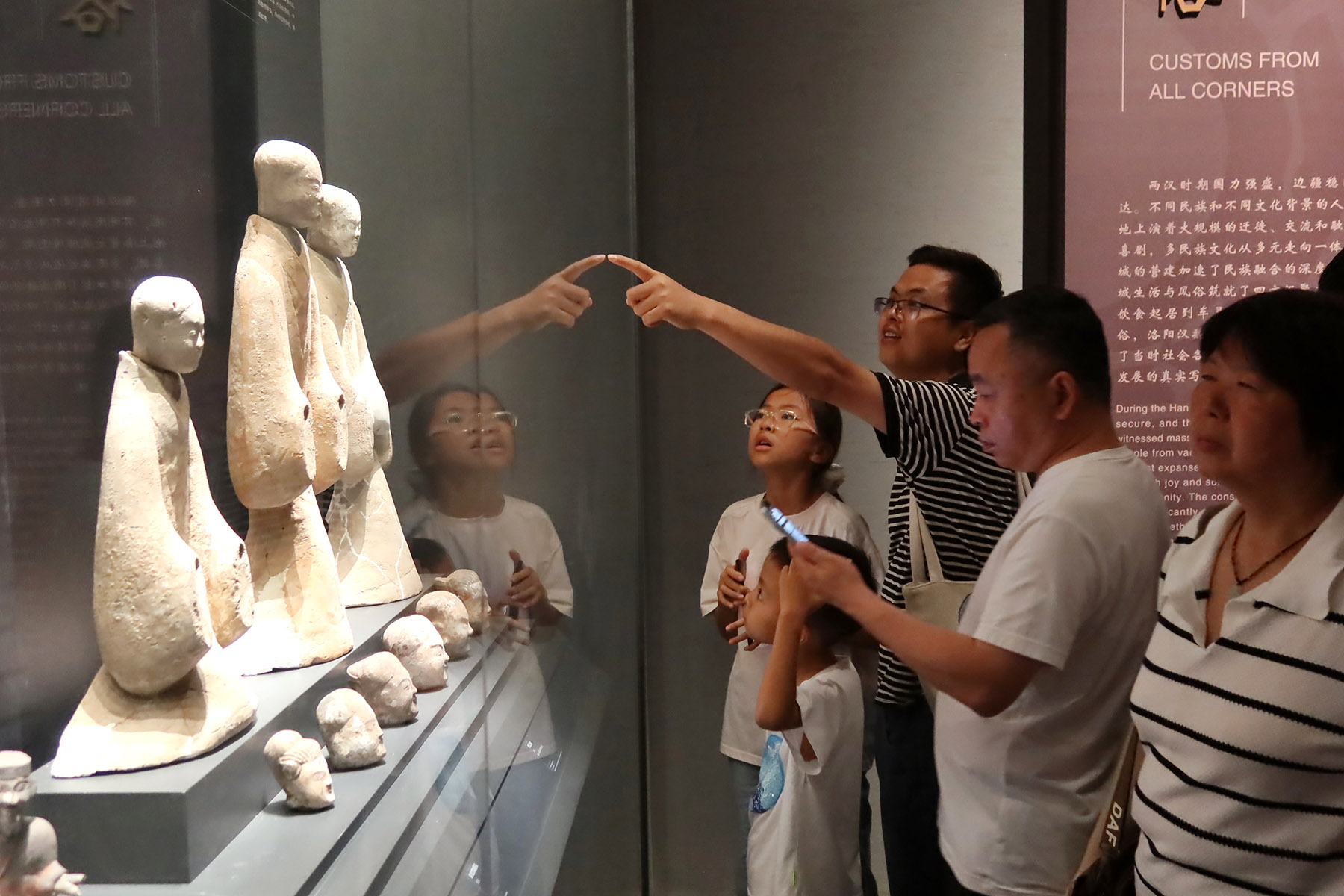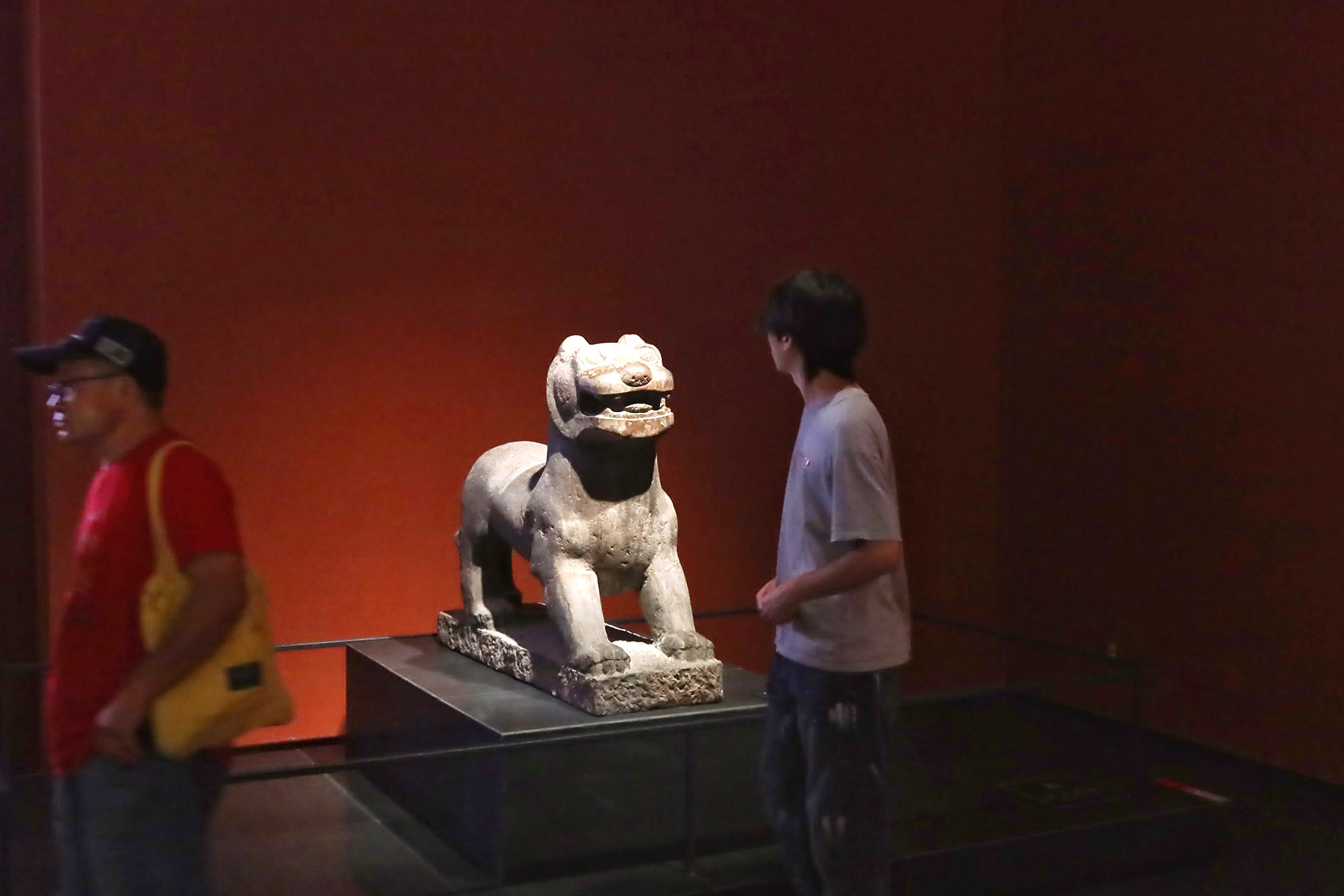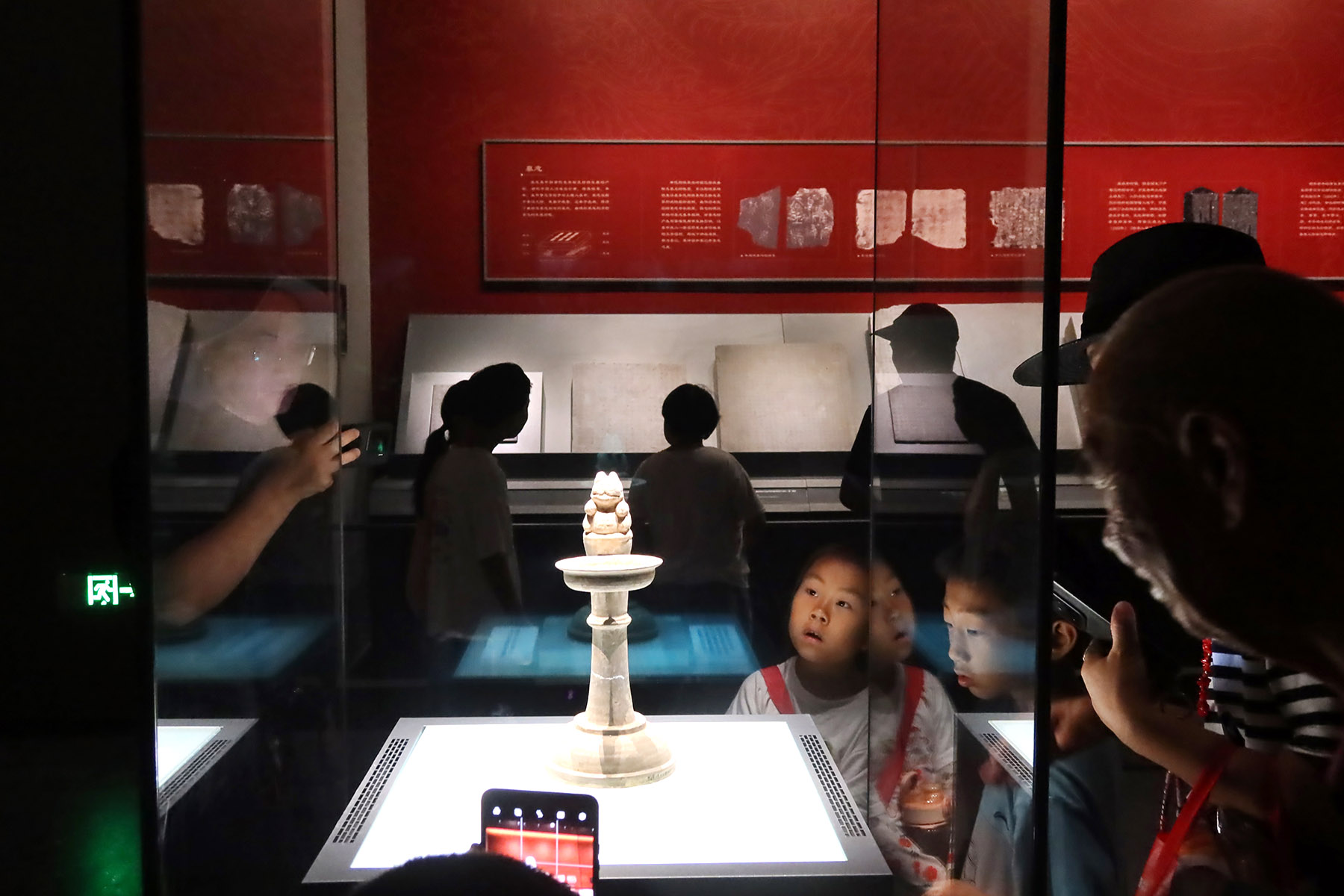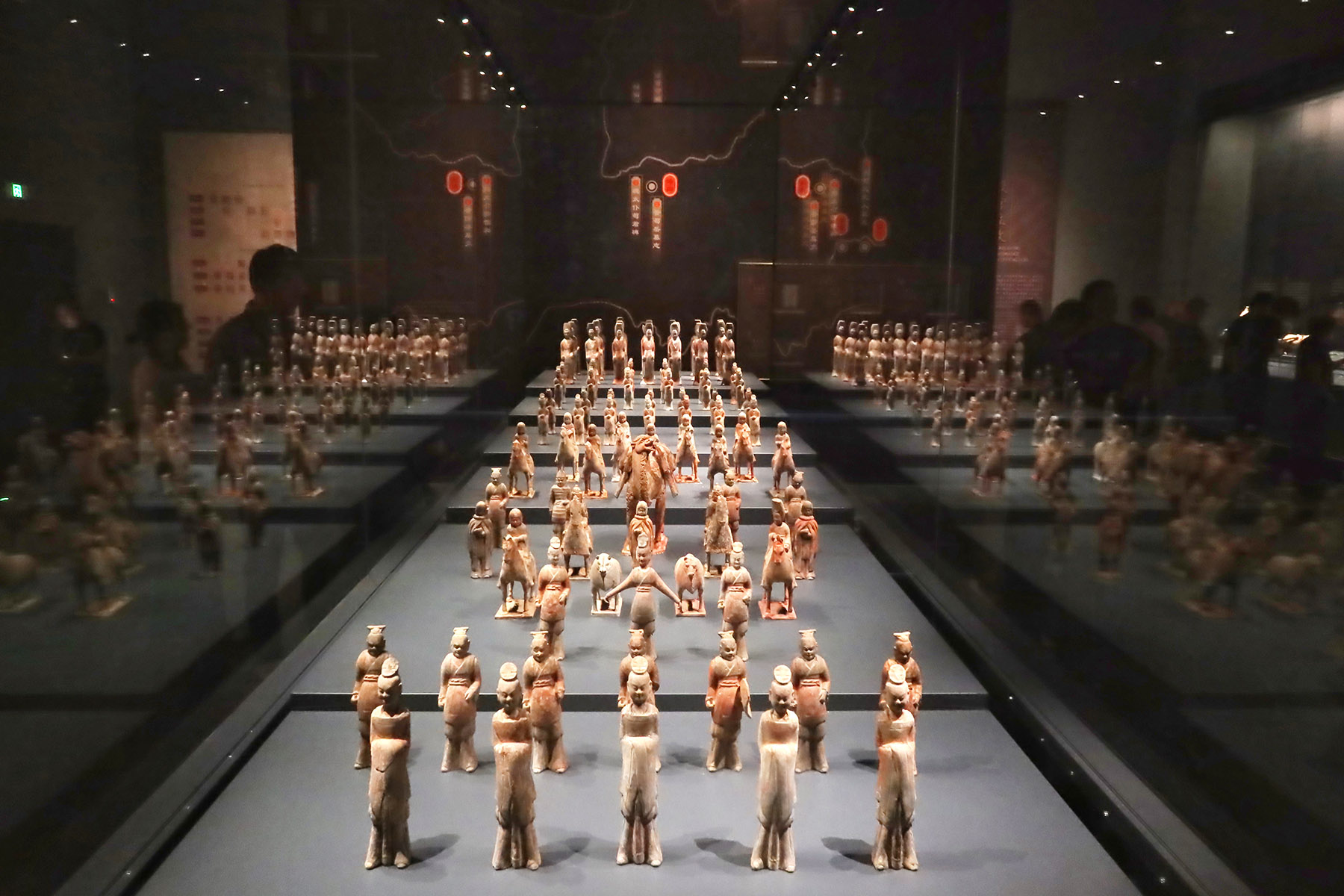Centuries-long history of the city comes to life through archaeological discoveries and great protective efforts, report Wang Ru in Luoyang, Henan, and Shi Baoyin in Zhengzhou.

In the 11th century, Northern Song Dynasty (960-1127) high-ranking official and historian Sima Guang temporarily withdrew from officialdom and settled in present-day Luoyang, Henan province, following setbacks due to political struggles.
The ancient capital functioned for 600 years, the longest stretch of a single city in Chinese history. When Sima passed through ancient Luoyang city ruins, he found it had been abandoned for several centuries. Struck by the stark contrast between its glorious past and present state, he wrote a poem to express his mixed feelings — "For tales of glory and decay through the ages, just read Luoyang's ruins; they tell all".
Originally established during the Western Zhou Dynasty (c. 11th century-771 BC), the city served as the capital through several dynasties, including the Eastern Zhou (770-256 BC), Eastern Han (25-220), Wei (220-265), Western Jin (265-316) and Northern Wei (386-534), until it was abandoned in the early Tang Dynasty (618-907). Its most significant period, from the end of the Eastern Han to the Northern Wei dynasties, was marked by political unrest and the integration of multiple ethnic groups.
READ MORE: Tracking down the dragon throughout history
As one of the eastern starting points of the ancient Silk Road, the site was designated as part of the UNESCO World Heritage site's "Silk Roads: the Routes Network of Chang'an-Tianshan Corridor" with the title "Site of Luoyang City from the Eastern Han to Northern Wei Dynasty (1st — 6th century)" in 2014.
Although its magnificent palaces and towering pagodas have disintegrated into the soil, its large scale — 100 square kilometers with city walls distinguishing the palace city, inner city and outer city — still tells of its glamorous past.

The opening of a new museum in July has shone a spotlight on this site once again. The Han-Wei Luoyang Ancient City Site Museum offers a panoramic view of the ancient city's 1,600-year history thanks to decades of archaeological efforts.
"With the museum, the site's archaeological achievements finally get a demonstration space, helping visitors gain a more vivid, profound understanding of this period of history," says Wang Ge, deputy director of the site's protection center.
A highlight at the museum is a model of the city's central axis during the Northern Wei era, signifying the site's significant role in ushering in a new capital system that influenced the following dynasties.
"We built a diorama of the buildings on the central axis of the palace city, including the Changhe Gate, the palace city's southern main gate, and Tongtuo Street, the north-south main road to the south of the gate, about 40 to 60 meters wide, based on archaeological studies. North of the gate, after two more gates, is the Taiji (Tai Chi) Hall, which was the main palace for major state affairs," says Ma Zhe, deputy director of the museum.
Ma mentions the site was the beginning of the "single palace city system" in the Wei Dynasty: in a country, there is only one capital, one palace city in the capital, and one main hall in the palace city, which has a central axis. The later dynasties followed this system, an alternative to the two palace cities system, which had accommodated more than one power holder, showing the increasing concentration of imperial power.
According to Liu Tao, a researcher at the Institute of Archaeology at the Chinese Academy of Social Sciences and head of the site's archaeological team, the city's central axis originated in the Wei Dynasty. The Northern Wei inherited it and expanded the axis by placing yuanqiu, an altar for ancient Chinese emperors to worship the heavens at the axis, thereby reinforcing the axis' importance.
"The Xianbei nomads from the north established the Northern Wei Dynasty in the hinterland of China's Central Plains, inherited the Han people's central axis system and reinforced it, showing that different ethnic groups made contributions in the formation of China as a unified country," says Liu.

As a major station on the ancient Silk Road, the site also witnessed more than communications for goods and materials but also the culture and technology that helped build the following Tang Dynasty into a major world power, he adds.
This understanding came from decades of hard work by archaeologists. Liu says that since 1962, his colleagues have carried out field work on the site in three phases.
In the 1960s and 70s, archaeologists were able to determine the basic layout of the city and study the existing building foundations. In the 1980s and 90s, to balance city construction and site protection, archaeologists identified the site's 100-sq-km protection scope. Since 2000, they have focused on studying the palace city and continued to refresh their research results.
Their excavations of the Taiji Hall made it on the list of China's top 10 archaeological discoveries for 2015.
"Our efforts in the past decades provide rich materials for understanding this ancient capital and help us piece together its significance from the Western Zhou to Northern Wei dynasties," says Liu.
"In each phase, we focused not only on our academic objectives, but also on how to balance the needs of economic and social development and site protection," he adds.
Wang, of the site's protection center, says: "Their work has laid a good foundation for our continued protection and utilization. Since they outlined the protection scope, we have worked to ensure major construction projects do not enter the site."
Moreover, in the city planning of Luoyang over the years, developers have not disturbed the site, turning to other areas for urban construction.

In the early 1970s, an institute to manage the site was established. In 2005, China launched a major project to protect large sites, including this one, and obtained investment for its protection and display.
As the site lies in an open field and has earthen remains that can easily fall prey to adverse climate conditions, workers backfilled it following the archaeological excavations and built replicas of the remains. In some areas, they built glass mantles for visitors to see the real subterranean view of the site.
In 2010, the National Cultural Heritage Administration designated the site as a national archaeological site park. Trees and crops were planted in areas within the site to improve the landscape.
"Luoyang has proposed three work phases for the large-scale sites — to protect it, beautify it, and bring it back to life," says Wang. "We have done well in protecting it and beautifying it. Now, with the opening of the new museum, we will bring it back to life."
Wang began working for the protection of the site in 2005. She remembers, in 2007, when she and her colleagues were building protective fences around the site, there were only wheat fields.
ALSO READ: Museum puts the excitement into excavations
"We have gradually unveiled the important relics of the site, so people can learn that, under the wheat fields, there was a prosperous ancient capital where numerous well-known legends were born," says Wang.
Thanks to their efforts, visitors can stand on the site and see what their ancient counterparts saw over a millennium ago.
"The surrounding landscape remains almost unchanged. More importantly, since no construction is taking place in the surrounding area, the urban skyline is also well-preserved. This ensures that the view closely resembles its historical appearance, offering visitors a unique sense of time travel," says Liu, the archaeological researcher.
"Through our efforts, this will continue, so the next generations can enjoy this marvelous and immersive feeling," he adds.
Contact the writers at wangru1@chinadaily.com.cn


